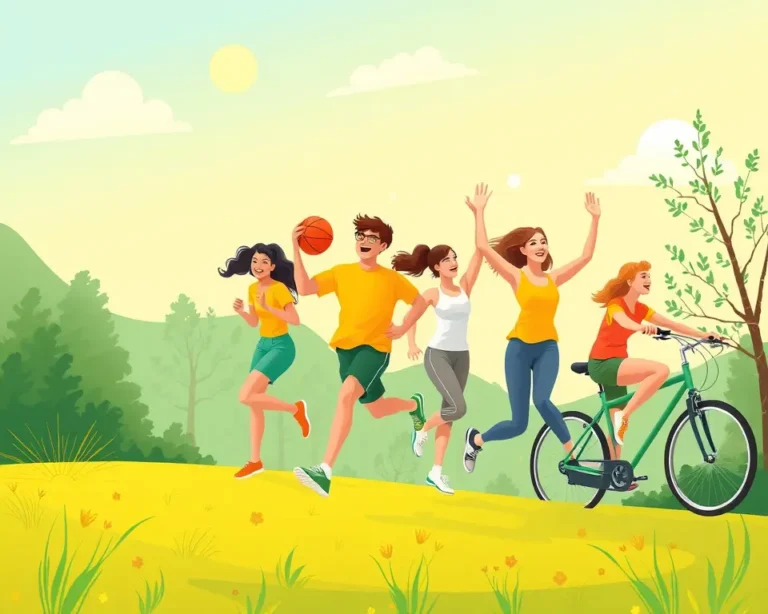The COVID-19 pandemic dramatically altered daily routines, and teenagers were particularly affected. School closures, lockdowns, and the cancellation of sports and extracurricular activities led to a significant decrease in physical activity among this age group. Now, as the world emerges from the pandemic, a new wave of fitness videos aims to address this issue and get teens moving again.
The Pandemic’s Impact on Teen Fitness
Before the pandemic, a concerning number of adolescents were already not meeting the recommended levels of physical activity. In 2016, a staggering 81% of adolescents aged 11-17 worldwide were considered physically inactive. The COVID-19 pandemic exacerbated this problem, leading to a further decline in teen fitness levels. Studies have shown substantial decreases in physical activity during the pandemic’s peak. For example, one study reported a 27.3% decrease in mean steps taken worldwide within 30 days of the pandemic declaration. In Northern California, the percentage of adolescents being physically active 5 or more days per week dropped from 54% before the pandemic to only 38% during it.
Several factors contributed to this decline:
- School closures: With in-person physical education classes canceled, many teens lost a primary source of exercise.
- Sports cancellations: Organized sports, a key component of many teens’ fitness routines, were put on hold.
- Gym and recreational facility closures: Access to gyms and other fitness facilities was limited or completely unavailable.
- Increased screen time: With more time spent at home, screen time inevitably increased, leading to more sedentary behavior.
The consequences of this reduced physical activity are far-reaching. Besides the obvious physical health implications, lack of exercise has also been linked to poorer mental health, increased stress, and greater worry about the pandemic among teenagers.
The Rise of COVID-Inspired Fitness Videos
Recognizing the need to address the decline in teen fitness, many fitness professionals and organizations have created online fitness videos specifically tailored for this age group. These videos aim to provide accessible, engaging, and effective workouts that teens can do at home or in limited spaces.
These COVID-inspired fitness videos come in various forms:
- Dance workouts: These combine fun dance moves with cardio exercises, making fitness feel less like a chore.
- Yoga and Pilates: These focus on flexibility, strength, and mindfulness, promoting both physical and mental well-being.
- High-intensity interval training (HIIT): These short, intense workouts are time-efficient and effective for burning calories and building strength.
- Sports-specific training: Some videos focus on exercises that help teens maintain or improve their skills in specific sports.
- Bodyweight exercises: These require no equipment and can be done anywhere, making them highly accessible.
Key Features of Effective Teen Fitness Videos
Several characteristics make certain fitness videos more effective than others in engaging and motivating teenagers:
- Relatability: Videos featuring instructors who are close in age to the target audience or who understand the challenges teens face are more likely to resonate.
- Variety: Offering a range of different workouts and styles keeps things interesting and prevents boredom.
- Short and sweet: Teens often have short attention spans, so shorter workouts (20-30 minutes) may be more effective.
- Fun and engaging: Incorporating music, games, and challenges can make exercise more enjoyable.
- Clear instructions: Videos should provide clear and concise instructions, with modifications for different fitness levels.
- Positive reinforcement: Encouragement and positive feedback can help teens stay motivated and build confidence.
How to Encourage Teens to Use Fitness Videos
While the availability of COVID-inspired fitness videos is a positive step, getting teens to actually use them can be a challenge. Here are some strategies parents and educators can employ:
- Lead by example: Parents who prioritize their own fitness are more likely to inspire their children to do the same.
- Make it a family affair: Exercising together as a family can be a fun and bonding experience.
- Find activities they enjoy: Don’t force teens into activities they dislike. Encourage them to explore different options until they find something they find enjoyable.
- Set realistic goals: Help teens set achievable goals and celebrate their progress.
- Limit screen time: Encourage teens to reduce their overall screen time and dedicate some of that time to physical activity.
- Create a supportive environment: Offer encouragement and avoid criticism. Focus on the positive aspects of exercise, such as improved mood and energy levels.
- Incorporate activity into daily routines: Encourage teens to walk or bike to school, take the stairs instead of the elevator, and participate in active chores.
The Role of Schools and Communities
Schools and community organizations also play a vital role in promoting teen fitness. They can:
- Offer virtual or in-person fitness classes: Provide opportunities for teens to participate in structured exercise programs.
- Promote active transportation: Encourage walking and biking to school and other destinations.
- Create safe and accessible recreational spaces: Ensure that teens have access to parks, playgrounds, and other facilities where they can be active.
- Partner with fitness professionals: Bring in experts to lead workshops and provide guidance on exercise and healthy eating.
- Educate teens about the benefits of physical activity: Help teens understand the importance of exercise for their physical and mental health.
Overcoming Barriers to Teen Fitness
Even with the best efforts, some teens may face significant barriers to engaging in physical activity. These barriers can include:
- Lack of time: Teens may feel overwhelmed with schoolwork, extracurricular activities, and social commitments.
- Lack of motivation: Some teens may simply not be interested in exercise.
- Lack of access: Teens may not have access to safe and affordable recreational facilities or programs.
- Body image issues: Some teens may feel self-conscious about their bodies and avoid exercise as a result.
- Disabilities or health conditions: Teens with disabilities or chronic health conditions may face unique challenges in engaging in physical activity.
Addressing these barriers requires a multifaceted approach:
- Time management skills: Help teens develop time management skills so they can prioritize physical activity.
- Finding intrinsic motivation: Help teens discover the intrinsic benefits of exercise, such as improved mood, energy levels, and self-esteem.
- Providing accessible options: Offer a variety of affordable and accessible fitness programs and facilities.
- Promoting body positivity: Encourage teens to focus on the health benefits of exercise rather than on their appearance.
- Offering adaptive programs: Provide adaptive fitness programs that are tailored to the needs of teens with disabilities or health conditions.
The Future of Teen Fitness
The COVID-19 pandemic has highlighted the importance of physical activity for teen health and well-being. As we move forward, it is crucial to continue developing innovative and engaging ways to get teens moving. COVID-inspired fitness videos are a valuable tool, but they are just one piece of the puzzle. By working together, parents, educators, communities, and fitness professionals can create a culture that supports and promotes teen fitness for years to come.
The focus should be on creating sustainable habits that teens can carry into adulthood, ensuring a healthier and happier future generation. This includes not only encouraging physical activity but also promoting healthy eating habits and addressing mental health concerns. By taking a holistic approach to teen well-being, we can help them thrive in all aspects of their lives.







